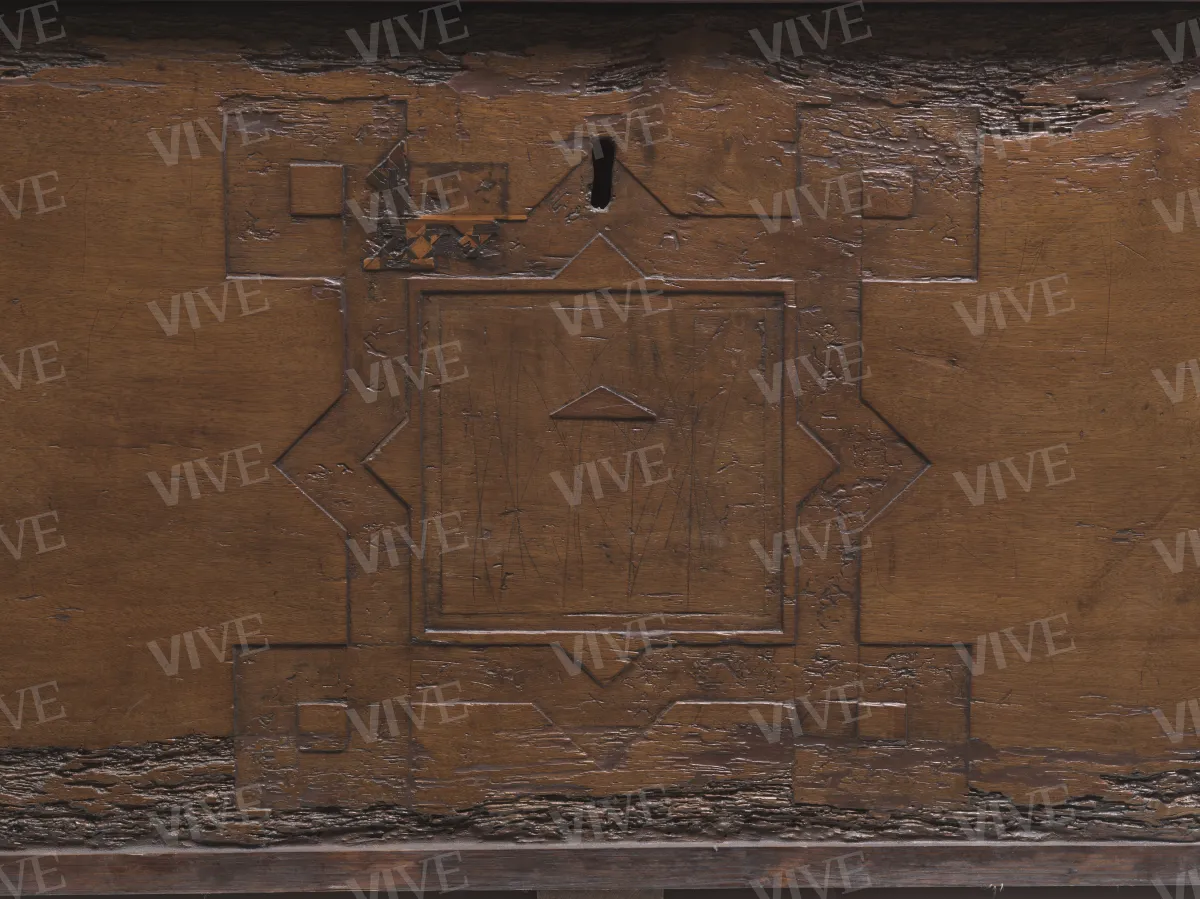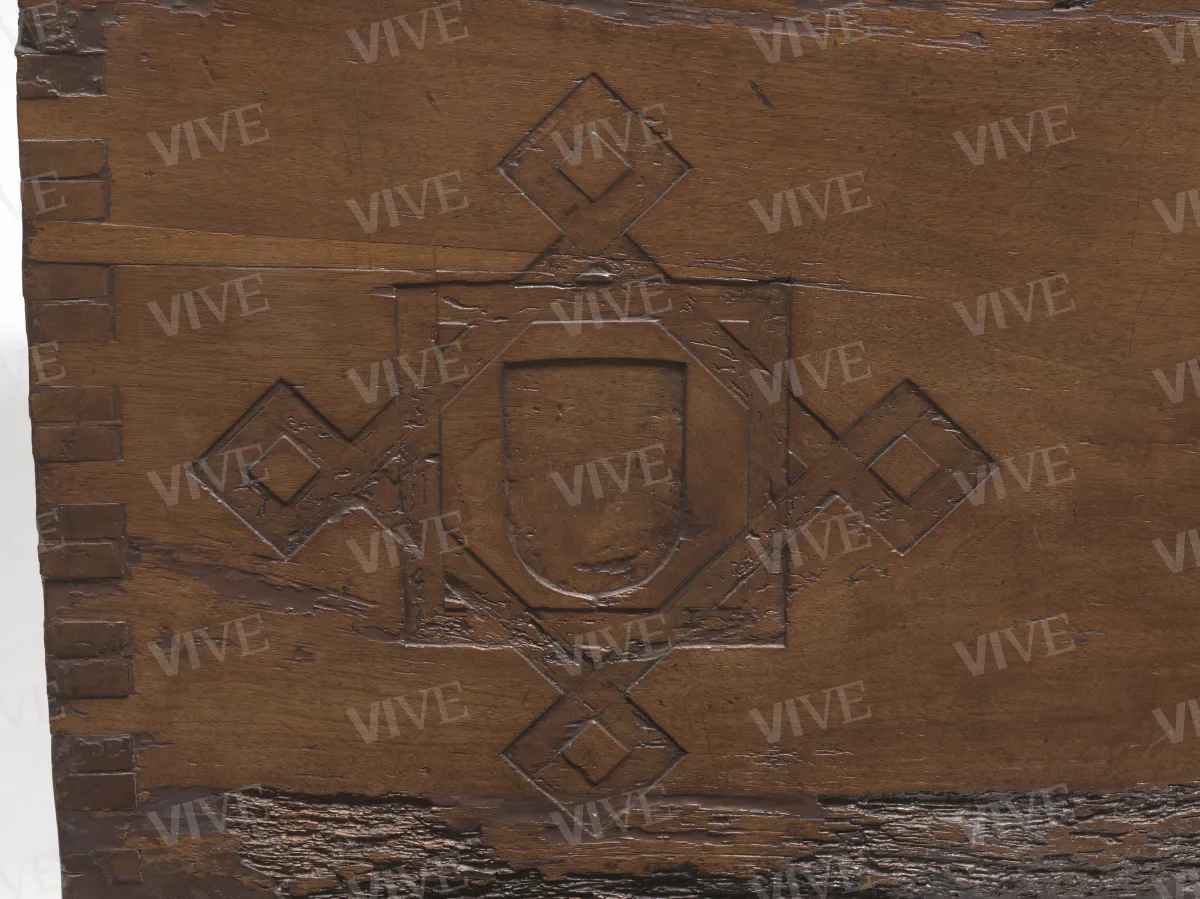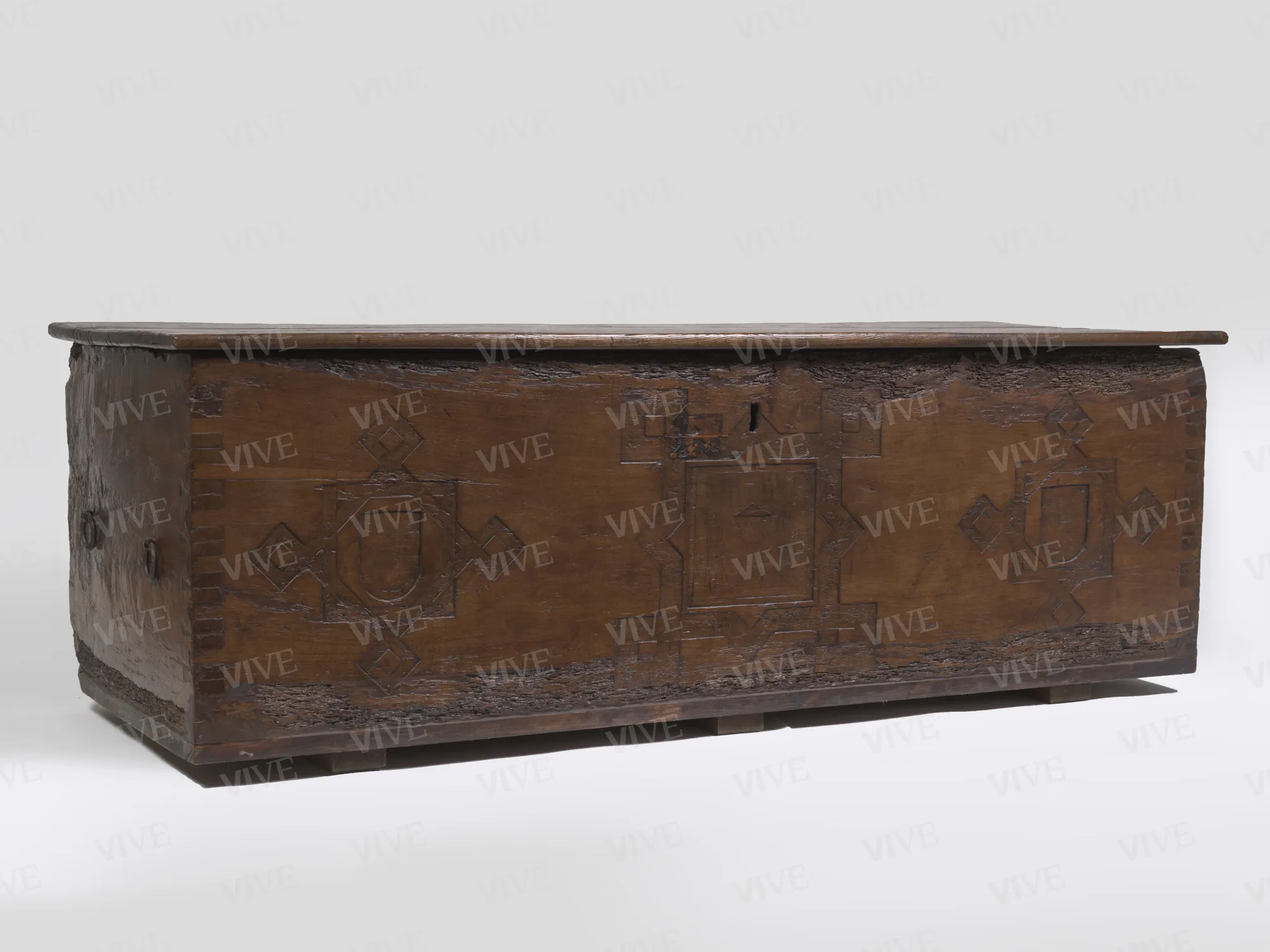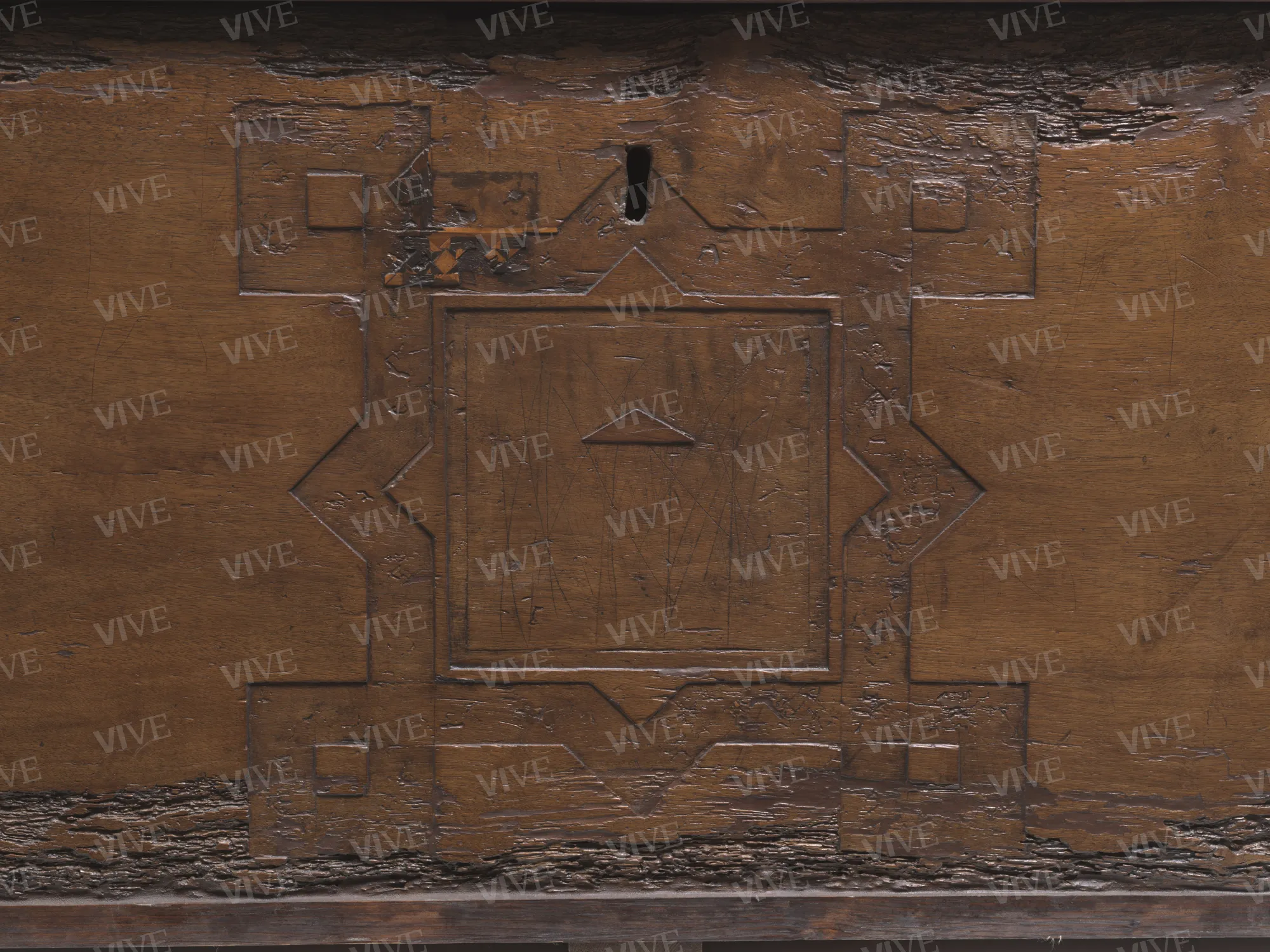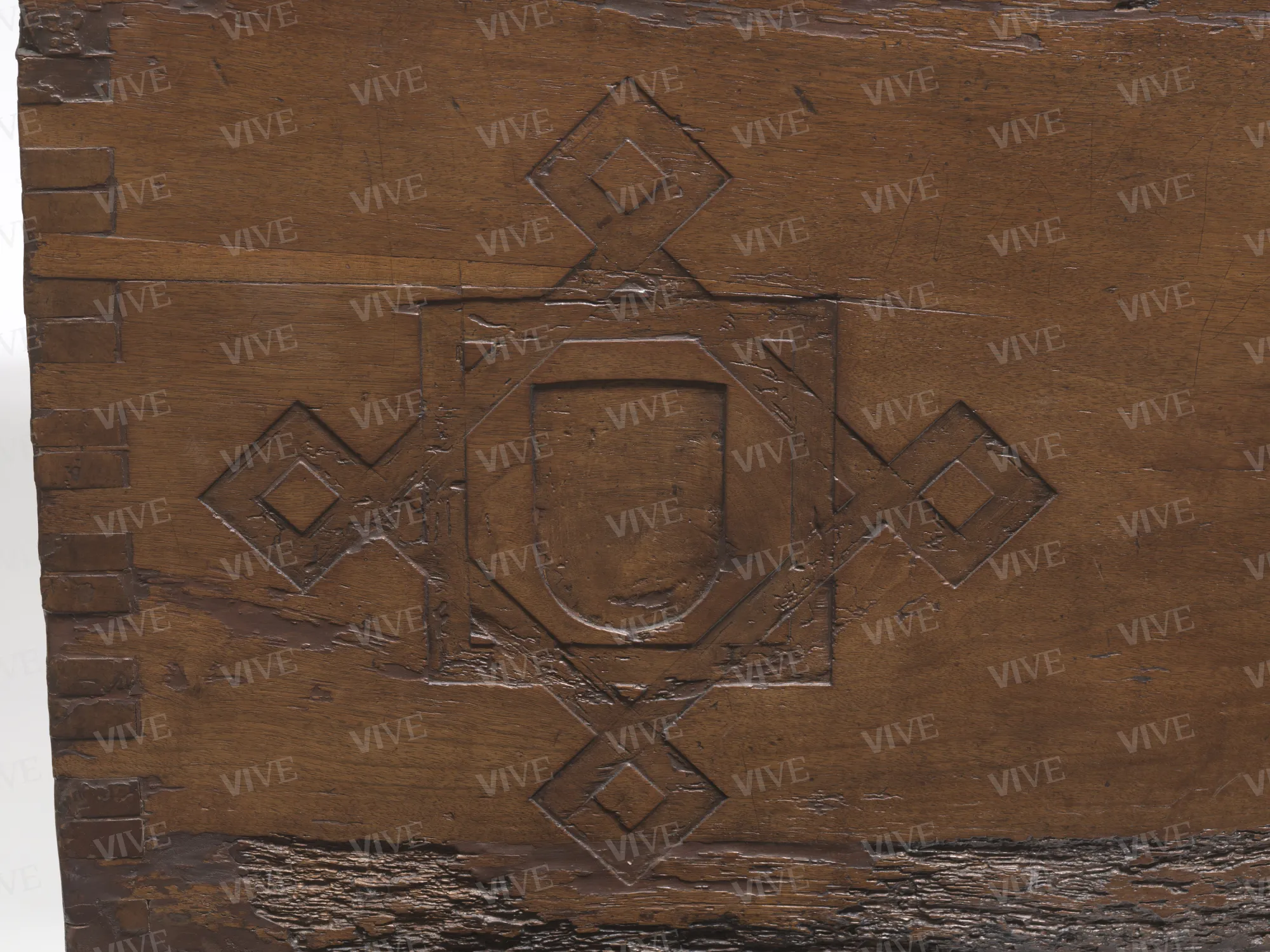Cassone, or Marriage Chest
Roman (?) milieu 15th century ?
This cassone, or marriage chest, is characterized on its exterior by three large geometrically inspired ornamental elements originally filled with polychrome inlay. Except for minute portions of surviving inlay in the large central square, only the hollows arranged along the surface to accommodate dyed woods are still extant. Furnishings of this type were often made for weddings; the two shields now devoid of decoration would suggest that the piece originally also included heraldic coats of arms.
This cassone, or marriage chest, is characterized on its exterior by three large geometrically inspired ornamental elements originally filled with polychrome inlay. Except for minute portions of surviving inlay in the large central square, only the hollows arranged along the surface to accommodate dyed woods are still extant. Furnishings of this type were often made for weddings; the two shields now devoid of decoration would suggest that the piece originally also included heraldic coats of arms.
Details of work
Catalog entry
Federico Hermanin first chronicled the provenance of this chest (Hermanin 1945), which seems to have been acquired by Palazzo Venezia from the famous monastic complex of the Santi Quattro Coronati, an important historical Roman site that was temporarily used as a papal seat in the fifteenth century. While it is not possible to irrefutably reconstruct its use in the monastery, it is likely that it served, as was usual for this type of artifact, for the storage of vestments, fabrics, but also sumptuary objects or documents. Inventories of the precious furnishings of churches and monasteries compiled between the thirteenth and fifteenth centuries actually record the presence of these cassoni, or large chests, for the storage of objects. The chest under consideration has four handles along the short sides, certainly to make it easier to move. For security reasons, however, a lock was provided so that its contents could be kept safely: the surviving lock, though, is detached from its housing and preserved inside. The Palazzo Venezia cassone has been thoroughly and integrally restored: some of its parts, such as the bottom, are fully restored; others, such as the back and the short right side, have been reinforced to afford stability to the original wooden parts, which were greatly compromised by termites. The original dovetail joints, on the other hand, are clearly visible at the corner between the front and the left short side.
On the main front, there are three large ornamental modules that have been hollowed out on the wooden surface that originally housed the cassone’s now-lost polychrome inlay. Two of these, placed on the right and left respectively, are identical and consist of a square crossed by a ribbon-like interlacing of rhomboidal outline with lozenge corners within which a shield-shaped outline has been carved out. The third module, on the other hand, which is positioned in the center and is larger than the other two, takes up the same ornamental theme as the intersecting square with rhombus but facing in the opposite direction. Unlike the others, moreover, the center of the square does not contain a shield but a quadrangular shape with a minute triangle inside. Originally, these three geometric figures were spanned by wooden inlay, bits and pieces of which are still visible, as in the upper portion of the central element where a band of stars can still be seen. The loss of the inlay, however, has allowed us to analyze the technique followed by the inlayer, who proceeded by inserting portions of dyed wood within grooves obtained by hollowing out the wood. It is likely that coats of arms were also placed in the center of these three ornamental elements as the two shield-shaped elements in the two smaller panels would suggest. In attributing the piece to a Roman workshop—which still seems to be the most plausible hypothesis—Hermanin juxtaposed the conformation of the cassone’s ornamental modules with the typical Cosmatesque artifacts, dating the piece to the thirteenth–fourteenth centuries (Hermanin 1948, pp. 360–361). In fact, this technique would suggest a date of between the late fourteenth and fifteenth century: an ornamental motif that is very similar to the one in Palazzo Venezia, which is also inlaid, is found in a chest in the Bagatti Valsecchi museum in Milan, which is probably the result of a recomposition of several pieces of fifteenth-century furnishings (Chiarugi 2003).
Giampaolo Distefano
Entry published on 12 February 2025
State of conservation
Additions and reinforcements undertaken during restoration; inlay missing from front.
Provenance
Rome, Monastery of Santi Quattro Coronati.
References
Hermanin Federico, L’arte in Roma dal sec. VIII al XIV, Bologna 1945, tav. CLXXXV, 2;
Hermanin Federico, Il Palazzo di Venezia, Roma 1948;
Windisch-Graetz Franz, Möbel Europas. Von der Romanik bis zur Spätgotik mit einem Rückblick auf Antike und Spätantike, München 1982, p. 238, n. 187;
Chiarugi Simone, in Pavoni Rosanna (a cura di), Museo Bagatti Valsecchi, I, Milano 2003, p. 106, n. 41.


